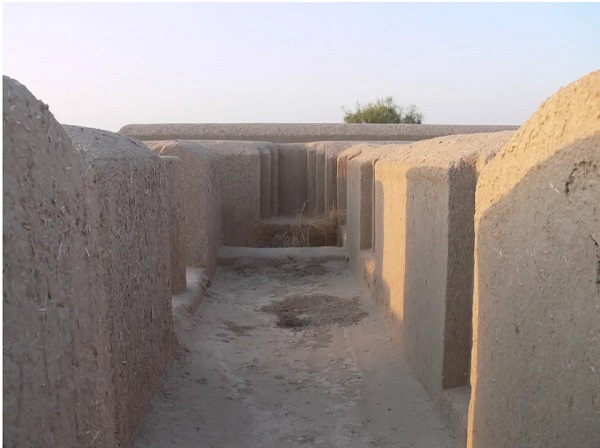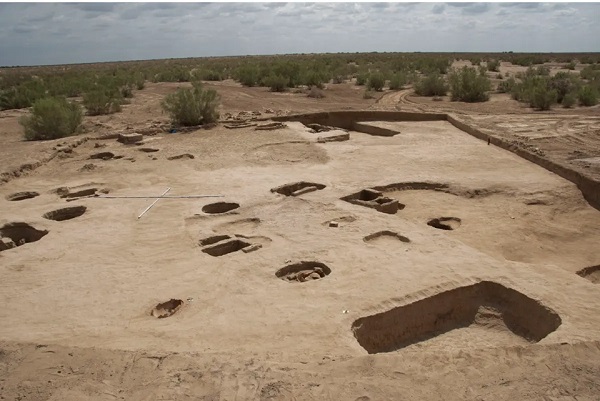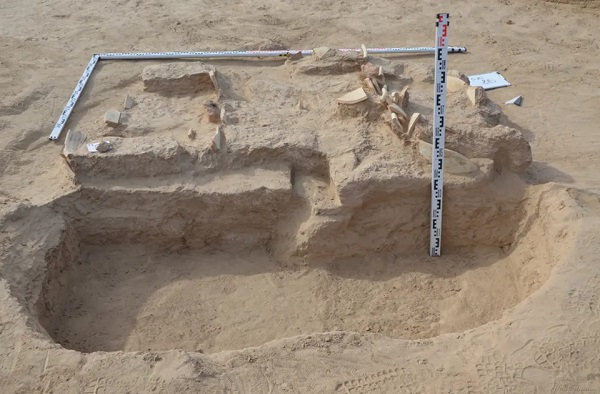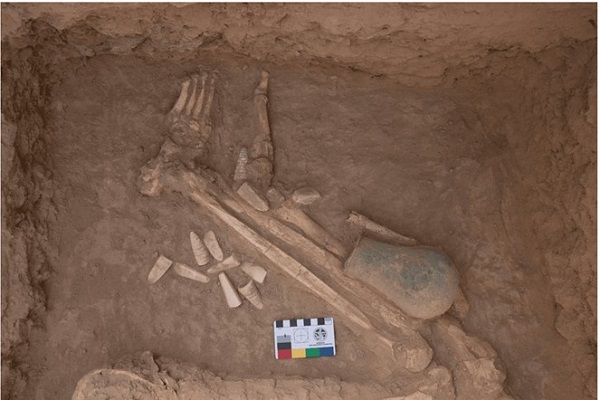Scientists from the Institute of the History of Material Culture of the Russian Academy of Sciences and the Miklukho-Maklay Institute of Ethnology and Anthropology of the Russian Academy of Sciences conducted a large-scale study, which systematized data on the funeral rite, planography and chronology of necropolises of the largest proto-urban center of the Bronze Age Gonur-depe in Southeastern Turkmenistan. The results obtained confirm the special role of Gonur-depe as a key administrative and ritual center of one of the most mysterious ancient agricultural cultures of Central Asia, the Oxus civilization. The results of the study have been published in the scientific journal “Vostok”.
The Bactrian-Margian Archaeological Complex (BMAC), or the Oxus civilization (the ancient name of the Amu Darya), is one of the most mysterious ancient cultures of the Bronze Age (c. 2300-1700 BC), which flourished on the territory of modern Turkmenistan, Afghanistan, Uzbekistan, Tajikistan and Northern Iran. Its discovery in the 1970s by Soviet/Russian archaeologist Viktor Sarianidi became a sensation: it turned out that in the heart of Central Asia during the Bronze Age there was a highly developed culture of the Middle Eastern type with monumental architecture, complex irrigation system and unique art, comparable to the high civilizations of the Old World.
Numerous finds indicate a high level of cultural development and connections with other civilizational centers – Elam, Mesopotamia, Harappa and even Egypt. The study of the BMAC sheds light on the early stages of the formation of proto-urban agricultural societies in Eurasia and their role in the “Great Silk Road” before its official emergence. V. I. Sarianidi and his followers discovered key monuments for science, primarily Gonur Depe (Turkmenistan), discovering temples, palaces and traces of rituals that the author of the excavations considered proto-Zoroastrian. Despite the controversies about the origin and decline of this civilization, the BMAC remains an important link in understanding intercultural interaction in Central Asia and the Middle East in ancient times.
Gonur 20 Necropolis
“Gonur was not just a large settlement, but a real administrative and ritual center of ancient Margiana. Our research has shown that most of the small necropolises on its territory already existed during the heyday of the main monumental palace and temple complex. This raises new questions about the functional zoning and relative chronology of the monument, which may have featured sacred, residential, industrial zones and burial sites,” emphasizes Alexey Fribus, Senior Researcher at the Department of Archaeology of Central Asia and the Caucasus at the IIMC RAS.
The Gonur-depe chronology is based on a series of radiocarbon dates (over 170), one third of which are AMS dates obtained in the world’s leading laboratories. The study analyzed 57 dates across five key sites. Special attention was paid to strict data verification: samples with large errors were excluded from the sample, all dates were calibrated according to a single standard and analyzed using the OxCal program.
“Our research has revealed a fairly clear social stratification in the Gonur-depe funeral rite. Adult burials contain 3-6 times more inventory than children’s burials, and the richest burials (an average of 11 items) were made in cists — it seems that these are really elite structures. But the main thing is that we have discovered an amazing stability of traditions: all necropolises, regardless of location, demonstrate the same system of interrelations between the elements of the ritual,” says Vladimir Kufterin, a leading researcher at the Miklukho—Maklay Institute of Ethnology and Anthropology of the Russian Academy of Sciences.
Gravestone structure at the Gonur 20 necropolis
Burial at the Gonur 20 necropolis
The conducted research became possible thanks to the close cooperation of specialists from the IIMC RAS and the IEA RAS with the full assistance of the Ministry of Culture of Turkmenistan. The results obtained open up new possibilities for understanding the culture of the ancient farmers of Central Asia, the secrets of which are now hidden under the sands of the Karakum desert.
The study was conducted on the basis of the Institute of the History of Material Culture of the Russian Academy of Sciences within the framework of the project “Funeral Rite and Chronology of “Small necropolises” of the Proto-urban center of the Bronze Age Gonur-depe (Turkmenistan), supported by the Russian Science Foundation grant, https://rscf.ru/project/23-28-01720/ ///Originally published on the website of the Institute of the History of Material Culture of the Russian Academy of Sciences (IIMK RAS), 19 May 2025



